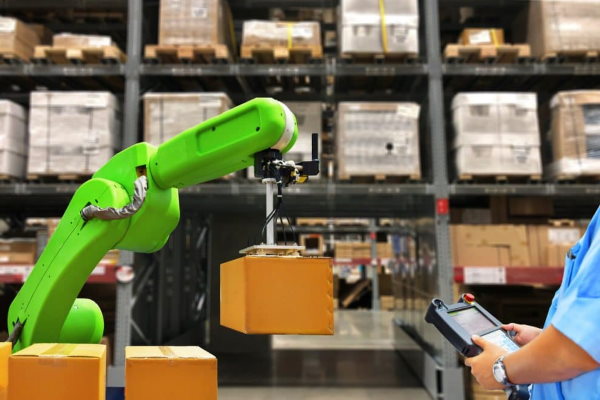Published on the 02/09/2021 | Written by Newsdesk

HBR’s three steps to modernise budgeting…
Smarter data use and digitised demand planning, rather than flashy technology can result in a supply chain modernisation with big benefits, according to Harvard Business Review.
It’s reporting that a number of its clients are reaping big benefits from ‘moderate effort’ supply chain modernisation efforts – rather than big three- to five-year transformations, complete with big budget outlays traditionally viewed as necessary.
Instead of requiring big investment in cloud, RFID tags and readers everywhere and robotics technologies to break down silos and create an integrated supply chain, HBR is advocating for a modernisation based around data, analytics and some automation.
“The secret to the success of this approach lies in three initiatives.”
“These more moderate efforts firms assemble readily available data; use advanced analytics to understand and predict customers’ and suppliers’ behaviour; optimise inventory, production and procurement decision-making to cut costs and improve responsiveness; and add some automation to revamp existing processes and introduce new ones,” HBR says.
The secret to the success of this approach lies in three initiatives, HBR says:
- Replace consensus forecasts with a unified view of demand
- Move from a one-size-fits all supply chain strategy to a segmented strategy
- Create a single plan to continually balance supply and demand and identify and respond to deviations or disruptions
It’s an approach the report, A Simpler Way to Modernise Your Supply Chain, says leads to lower supply chain costs, higher revenue thanks to fewer stock-outs and improved service levels, and increased customer retention. It cites examples with revenue increases of 20 percent, 10-30 percent improvements in service levels and operating cost reductions of three to four percent.
The combination of digitisation and analytics is also enabling companies to segment products and decide whether a strategy of operational efficiency or responsiveness is appropriate for any given segment.
The report outlines the path taken by one consumer packaged goods manufacturer, rethinking its demand planning process and dumping long-winded consensus forecasting processes to instead agree upfront on four sets of data – internal, consumer demand, macroeconomic information and external data including web search and social media mentions – to yield the most accurate picture.
It enabled the CPG to gain a granular view of market demand down to SKU and retailer, weekly forecasts of retailers’ orders of each SKU and a feasible supply plan used to generate revenue and gross margin forecasts.
Comparing that forecast with the business objectives ensured the company remained on track – and enabled it to rapidly address any issues, introducing more aggressive discounts or increasing marketing to increase sales.
It’s a process HBR says has led to more accurate financial plans, with the accuracy of financial forecasts made at the beginning of one month for the next month rising to up to 97 percent. Mature analytic technology also allows forecasts to be ‘decomposed’ back into basic components, providing executives with a clear view of the process.
Replacing manual sales and operations planning with an automated one, performed weekly and based on the SKU by SKU supply plan ensures the business is focused on achieving the same business goals and informs ‘everything’ from master production schedules to materials planning to logistics.
Monitoring of activities against KPIs was also refined.
“For most of its history, the CPG manufacturing company had used a one-size-fits-all strategy. Its forecasts were achieved by consensus, sales and operations planning was a month long process, the supply chain strategy didn’t distinguish between different products, and deviations from the plan and supply disruptions were managed ad hoc,” the report says.
“The company had excelled at operational efficiency by embracing continuous improvement in its production, packaging, distribution, and order fulfilment processes, but it hadn’t fundamentally changed any of them.
“Our approach to supply chain digitisation allowed the firm to transform the organisation in less than half the time and at less than a quarter of the expense that such efforts take most corporations.
And, says HBR, it’s a process other companies can also follow.
“A comprehensive, automated approach can allow them to redefine their supply chain strategies and respond quickly to deviations from the plan. And because it’s driven by AI, it will free up executives to devote more time to value-added activities, such as identifying the best opportunities for growing the business.”



























